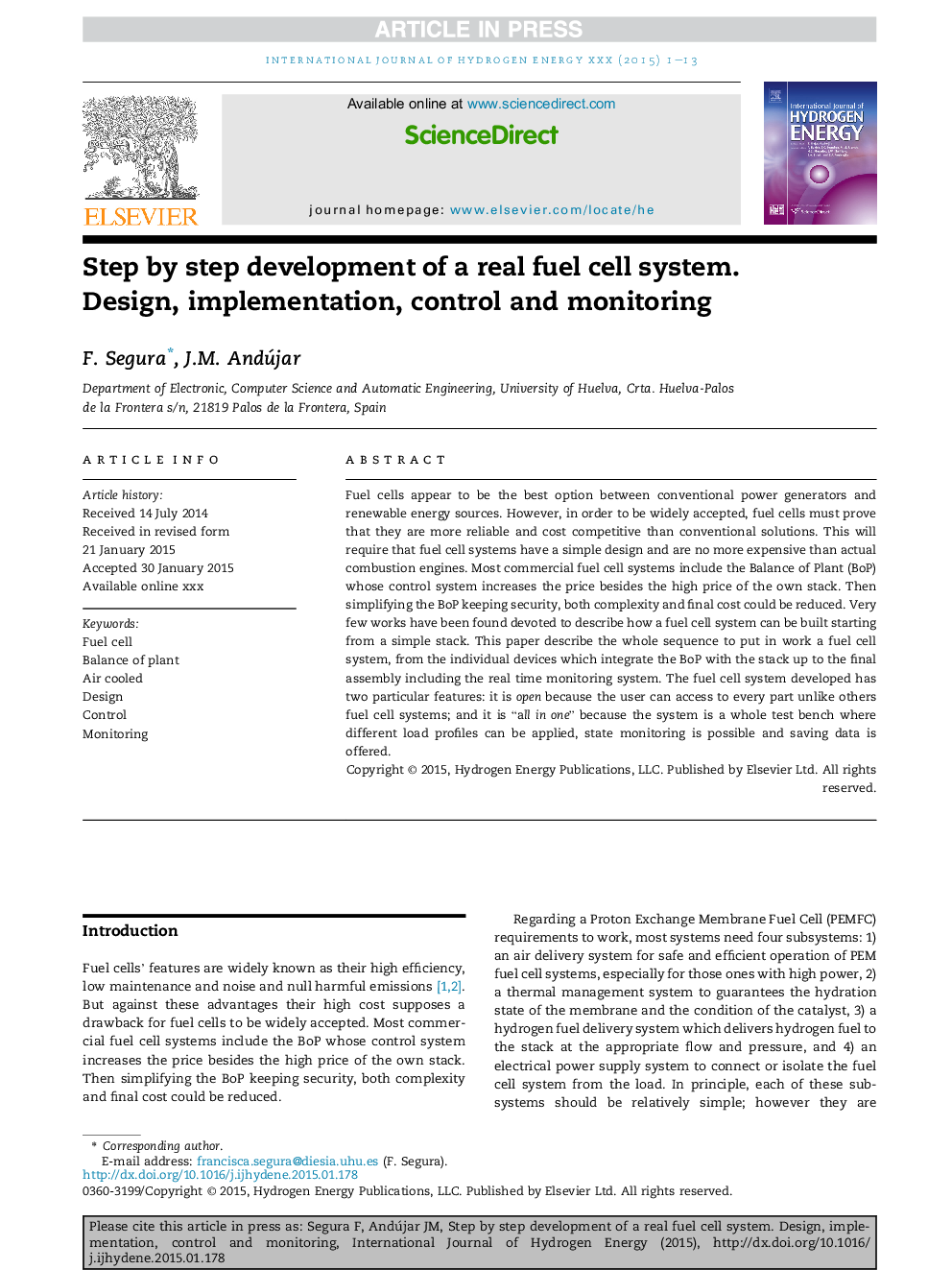| Article ID | Journal | Published Year | Pages | File Type |
|---|---|---|---|---|
| 7715962 | International Journal of Hydrogen Energy | 2015 | 13 Pages |
Abstract
Fuel cells appear to be the best option between conventional power generators and renewable energy sources. However, in order to be widely accepted, fuel cells must prove that they are more reliable and cost competitive than conventional solutions. This will require that fuel cell systems have a simple design and are no more expensive than actual combustion engines. Most commercial fuel cell systems include the Balance of Plant (BoP) whose control system increases the price besides the high price of the own stack. Then simplifying the BoP keeping security, both complexity and final cost could be reduced. Very few works have been found devoted to describe how a fuel cell system can be built starting from a simple stack. This paper describe the whole sequence to put in work a fuel cell system, from the individual devices which integrate the BoP with the stack up to the final assembly including the real time monitoring system. The fuel cell system developed has two particular features: it is open because the user can access to every part unlike others fuel cell systems; and it is “all in one” because the system is a whole test bench where different load profiles can be applied, state monitoring is possible and saving data is offered.
Related Topics
Physical Sciences and Engineering
Chemistry
Electrochemistry
Authors
F. Segura, J.M. Andújar,
